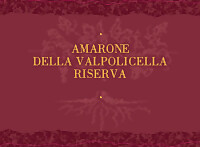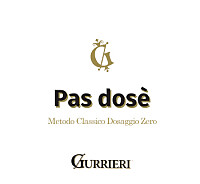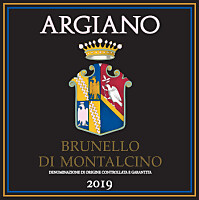
Wine Culture and Information since 2002 - Volume 23
 Wine Culture and Information since 2002 - Volume 23 |
|
Contrasts of Colli di Luni Vermentino and Sicilia GrilloLiguria and Sicily are compared in the glasses of our tasting by contrast with two of the primary white grapes of their respective regions: Vermentino and Grillo. |
|
Liguria and Sicily, from an enological point of view, do not have much in common. Starting from the grape varieties that are grown in their respective vineyards and, even more clearly, the wines that distinguish the two regions. This can be easily seen by simply tasting the wines – both white and red – that are produced in Liguria and Sicily. Although the vineyards of both regions are strongly influenced by the effects of their proximity to the sea, it is the climatic and meteorological conditions that mark the most substantial differences. In addition to the grape varieties, of course. Even the respective viticultural and enological histories and traditions are decidedly different, in both cases the result of the influences of the cultures that have followed one another in both regions throughout their history. This, not least, has determined the respective ampelographies of Liguria and Sicily, and therefore also the viticultural and enological styles. Last but not least, of course, are the inland conditions, factors that inevitably influence the characteristics of the vineyards, grapes and, of course, the wines. In both regions there are interesting native varieties – both white and red – while in Liguria there are a decidedly smaller quantity of non-native grapes – the so-called “international” ones – compared to the native varieties. In this month's tasting by contrast we will examine two white grapes typical of these two regions and used for the production of many Denominazione d'Origine Controllata wines (Denomination of Controlled Origin, DOC). For Liguria, we will examine Colli di Luni Vermentino, while for Sicily, a wine produced with the local variety Grillo, definitely among the best known and most appreciated ones in the region. These are two very different varieties, with evident and substantial differences that are clearly perceived in their wines.
|
|
The Colli di Luni denomination, although it is mainly associated with Liguria, is – as a matter of fact – an inter-regional denomination that also includes territories of Tuscany. Specifically, the Denominazione d'Origine Controllata Colli di Luni includes both territories of La Spezia – on the Ligurian side – and those of Massa and Carrara in Tuscany. The production disciplinary include both white and red wines, however it is the former that distinguish the enology of the denomination, in particular those produced with Vermentino grape. The enological production of this territory boasts a long history, so much so that it was cited and appreciated by Pliny the Elder, who wrote that “the wine of Luni has the palm among those of Etruria”. The famous writer and naturalist does not specify whether it was a white or red wine, however there are reliable information that Vermentino – the grape that we will examine in our tasting – has been cultivated in these lands for many centuries. The presence of Vermentino in the Colli di Luni is attested by a long history, also favored by its fruitful adaptation in these lands, so much so that, starting from the eighteenth century, it became the primary variety of the territory. In this regard, it should be noted that Vermentino is not a native variety of the Colli di Luni area and, although its origin is still uncertain today, it is considered native to the north-east of Spain and, from here, passing through the French Provence, then from Corsica, it reached Sardinia, then Liguria and Tuscany. The wines produced with Vermentino grapes in this territory are characterized by their marked elegance and a moderate body, especially when compared with those produced in Sardinia. In accordance with the production disciplinary, Colli di Luni Vermentino is produced with at least 90% of the homonymous grape and any remaining quota made up of white grapes permitted in Liguria and Tuscany. In this regard, it should be noted that the majority of the production of this wine is exclusively made with Vermentino and often vinified in inert containers, in order to enhance and preserve the finesse and elegance that is typical of this denomination.
|
||||
|
Since 2011, the entire territory of Sicily has been recognized as Denominazione d'Origine Controllata (Denomination of Controlled Origin, DOC). The related production disciplinary provides for the definition of many styles, which can be produced with practically any variety present on the island, whether native or international. Furthermore, wines produced with different varieties are permitted, as well as single-varietal wines with the indication of the grape on the label. In this latter specific case, as happens for the majority of Italian denominations, the variety indicated on the label must be used for at least 85% and any remaining quota must be made up of similar varieties permitted in Sicily. Moreover, wines with a mention of two varieties on the label and belonging to the same category are also allowed for production. The winemaking methods, in accordance with the production disciplinary, are decidedly broad, leaving considerable production freedom in terms of the choice of containers used for fermentation and aging, as well as grapes. This month's tasting by contrast will examine a wine of this denomination produced with the Grillo grape, certainly among the most appreciated and identifying white grape varieties of the region. Grillo is a grape with a relatively recent history, since it is a cross between two varieties, also typical of Sicily. It was in fact created in 1874 by Baron Antonio Mendola, crossing Catarratto with Moscato d'Alessandria, locally known as Zibibbo. The intent was to create a grape to be used for the production of Marsala, in order to give a more intense aroma to the wine. In this regard, recent research would seem to deny this origin, although it is still the most accredited one. Initially used for the production of the famous Marsala – still considered the queen grape for the quality production of this wine – in Sicily it is also used for table wines, both vinified alone and blended with other varieties. Even in these cases, Grillo is capable of expressing finesse and elegance, so much so that it is today considered one of the most representative white grape varieties of Sicily.
|
The bottles that we will pour into the glasses of our tasting by contrast do not present particular difficulties in finding. Colli di Luni Vermentino and Sicilia Grillo – especially this second wine – are easily found in any well-stocked wine shop, not least, also in large-scale retail chains. In consideration of the respective production disciplinary and, in general, in the majority of Italian wines with Denominazione d'Origine Controllata, which allow the presence of complementary grapes in the composition, we will make sure our wines are exclusively produced with the varieties of our interest. In any case, this is the production condition generally adopted by wineries – that is, the use of only the variety indicated on the label – however, we will check this aspect before purchasing. As regards aging, for both bottles we will choose wines fermented and aged in inert containers, preferably steel tanks. Finally, we will choose wines belonging to the most recent vintage and pour them into the respective tasting glasses at a temperature of 10 °C (50 °F). We pour Colli di Luni Vermentino and Sicilia Grillo into their respective glasses and begin the sensorial evaluation of the two wines. As usual, we will begin by examining the appearance, that is, how the wines present themselves to the eye, proceeding with the evaluation of Colli di Luni Vermentino. We tilt the glass over a white surface – a sheet of paper is sufficient – and observe the base. We can see an intense and bright greenish yellow color, often tending to straw yellow, with a high transparency. Let's now observe the wine towards the opening of the glass, where the thickness becomes thin, in order to evaluate the nuance. The color we observe confirms the base hue, that is, greenish yellow. Let's now move on to the evaluation of the appearance of Sicilia Grillo, therefore tilting its glass over the white surface. Here we observe an intense and bright straw yellow color, generally darker than Vermentino, also in this case with a high transparency. The nuance of the Sicilian wine confirms its basic color, therefore straw yellow. The aromas that distinguish the wines produced with Vermentino and Grillo are characterized by substantial differences, although it is possible to perceive olfactory qualities common to both varieties. The wines produced with Vermentino – therefore also those of the Colli di Luni denomination – are recognizable to the nose for the aromas of apple, pear, plum and peach as well as a pleasing note recalling almond. Among the main aromas attributable to the world of flowers, the prevalent sensations that are perceived to the nose in the wines produced with Vermentino are hawthorn and broom. In these wines we can also perceive aromas of exotic fruit, especially pineapple, and hints of citrus fruits. The wines produced with Grillo, among the most significant white grape varieties of Sicily, are recognizable to the nose for the aromas of apple, pear and citrus fruits, while among the aromas expressing the world of flowers, broom and hawthorn are the main ones. In addition, it can also often be possible to perceive scents of aromatic herbs, such as thyme and rosemary, as well as peach, apricot, pineapple and almond. Let's resume our tasting by contrast and proceed with the evaluation of the olfactory profiles of Colli di Luni Vermentino and Sicilia Grillo, starting – as in the previous phase – with the Ligurian wine. We keep the glass in a vertical position and, without swirling it, we proceed with the first smell in order to evaluate the opening, that is, the primary and identifying olfactory sensations of the wine. From the glass we perceive the aromas of apple, pear and peach followed by the floral sensations in which we recognize hawthorn and broom. Let's now swirl the glass, an operation that favors the development of the olfactory qualities of the wine, and proceed with the second smell. The olfactory profile of Colli di Luni Vermentino is completed with plum, pineapple, lemon and grapefruit in addition to the characteristic almond scent. Let's now move on to the evaluation of the olfactory profile of Sicilia Grillo and, by keeping the glass vertical, we proceed with the evaluation of its opening. On the nose, we can perceive aromas of apple, pear, apricot and an intense sensation recalling citrus fruits, followed by floral notes of broom and hawthorn. After swirling the glass, the olfactory profile of Sicilia Grillo is completed with pineapple, peach, plum, thyme, rosemary and a light sensation recalling almond. Let's now proceed with the evaluation of the gustatory profiles of our two wines, starting with the evaluation of the attack, that is, the examination of the primary qualities that are perceived in the mouth at the first sip. Let's start, just like in the previous phases, with the Colli di Luni Vermentino. In the mouth, we perceive the clear sensation of crispness given by acidity, a quality that finds perfect balance thanks to the effect of the alcohol. The structure of the wine is moderate, with a character that develops mainly in finesse and elegance. We also perceive the flavors of apple, pear and peach in addition to the pleasing bitter sensation recalling almond. Let's now take a sip of Sicilia Grillo and proceed with the evaluation of its attack. In the mouth, we perceive the pleasing crispness given by acidity, immediately well balanced by both the effect of the alcohol and the sensation of roundness, decidedly more intense than Vermentino. The structure is also fuller than that of Colli di Luni Vermentino. In the mouth we perceive the flavors of apple, pear and apricot, as well as peach, pineapple and a pleasing sensation of almond, in this case less intense than Vermentino. Let's now move on to the evaluation of the final sensations that the two wines leave in the mouth after swallowing, in particular the taste-olfactory persistence, that is, the amount of time during which the primary gustatory sensations continue to be clearly perceived in the mouth. The finish of Colli di Luni Vermentino is persistent, leaving a pleasing sensation of crispness and overall finesse in the mouth, a wine of marked agreeableness that certainly invites another sip. In the mouth, clean and intense flavors of apple, pear and peach are perceived in addition to the pleasing bitter sensation in which we recognize the almond. The finish of Sicilia Grillo is persistent and in the mouth, the flavors of apple, pear, apricot and pineapple continue to be clearly perceived, as well as a pleasing hint of almond, also in this case less intense than Vermentino. The sensation of structure – even in the final phase – is more intense in Grillo than in Vermentino, while maintaining a pleasing elegance and finesse. Before concluding our tasting, we place the glasses close together and proceed with the last smell, first the Colli di Luni Vermentino and then the Sicilia Grillo: the differences between the two wines are still clear and evident.
|
||||||||
Wines of the Month |
|
|
|
Score legend Prices are to be considered as indicative. Prices may vary according to the country or the shop where wines are bought |

|
|
Collio Sauvignon Ronco delle Mele 2023 |
|
| Venica & Venica (Friuli-Venezia Giulia, Italy) | |
 Sauvignon Blanc Sauvignon Blanc | |
| Price: € 39.00 | Score: |
 Brilliant straw yellow and nuances of straw yellow, very transparent. Brilliant straw yellow and nuances of straw yellow, very transparent. Intense, clean, pleasing, refined and elegant, starts with hints of
gooseberry, peach and elder flower followed by aromas of broom, hawthorn,
citron, pear, passion fruit, apple, pineapple, grapefruit, nettle, tomato
leaf, green bell pepper and mineral. Intense, clean, pleasing, refined and elegant, starts with hints of
gooseberry, peach and elder flower followed by aromas of broom, hawthorn,
citron, pear, passion fruit, apple, pineapple, grapefruit, nettle, tomato
leaf, green bell pepper and mineral.
 Crisp attack and however balanced by alcohol, good body, intense
flavors, agreeable. Crisp attack and however balanced by alcohol, good body, intense
flavors, agreeable.
 Persistent finish with flavors of gooseberry, peach and citron. Persistent finish with flavors of gooseberry, peach and citron. Part of the wine ages in cask. Part of the wine ages in cask. |
|
 Pasta and risotto with fish and crustaceans, Sauteed fish with mushrooms, Mushroom soups, Sauteed white meat Pasta and risotto with fish and crustaceans, Sauteed fish with mushrooms, Mushroom soups, Sauteed white meat |
|

|
|
Collio Sauvignon Extempore 2018 |
|
| Venica & Venica (Friuli-Venezia Giulia, Italy) | |
 Sauvignon Blanc Sauvignon Blanc | |
| Price: € 50.00 | Score: |
 Intense golden yellow and nuances of golden yellow, very transparent. Intense golden yellow and nuances of golden yellow, very transparent. Intense, clean, pleasing, refined and elegant, starts with hints of
gooseberry, dried apricot and elder flower followed by aromas of broom,
mango, passion fruit, apple, peach, pear, lychee, pineapple, grapefruit,
ginger, saffron, sage, honey and flint. Intense, clean, pleasing, refined and elegant, starts with hints of
gooseberry, dried apricot and elder flower followed by aromas of broom,
mango, passion fruit, apple, peach, pear, lychee, pineapple, grapefruit,
ginger, saffron, sage, honey and flint.
 Crisp attack and however balanced by alcohol, good body, intense
flavors, agreeable. Crisp attack and however balanced by alcohol, good body, intense
flavors, agreeable.
 Persistent finish with flavors of gooseberry, dried apricot and mango. Persistent finish with flavors of gooseberry, dried apricot and mango. Fermented in cask, 9 months in cask. Fermented in cask, 9 months in cask. |
|
 Pasta with fish and meat, Stewed fish with mushroom, Broiled crustaceans, Vegetable and mushroom flans Pasta with fish and meat, Stewed fish with mushroom, Broiled crustaceans, Vegetable and mushroom flans |
|

|
|
Soave Motto Piane 2020 |
|
| Fattori (Veneto, Italy) | |
 Garganega Garganega | |
| Price: € 25.00 | Score: |
 Intense straw yellow and nuances of golden yellow, very transparent. Intense straw yellow and nuances of golden yellow, very transparent. Intense, clean, pleasing, refined and elegant, starts with hints of
plum, apple and ginger followed by aromas of hawthorn, pear, medlar,
pineapple, citrus fruit peel, linden, honey, almond, mineral and hints of
vanilla. Intense, clean, pleasing, refined and elegant, starts with hints of
plum, apple and ginger followed by aromas of hawthorn, pear, medlar,
pineapple, citrus fruit peel, linden, honey, almond, mineral and hints of
vanilla.
 Crisp attack and however balanced by alcohol, good body, intense
flavors, pleasing roundness. Crisp attack and however balanced by alcohol, good body, intense
flavors, pleasing roundness.
 Persistent finish with flavors of plum, apple and honey. Persistent finish with flavors of plum, apple and honey. 12 months in cask and steel tanks, 12 months in bottle. 12 months in cask and steel tanks, 12 months in bottle. |
|
 Pasta and risotto with fish and crustaceans, Mushroom soups, Sauteed white meat, Roasted fish Pasta and risotto with fish and crustaceans, Mushroom soups, Sauteed white meat, Roasted fish |
|

|
|
Amarone della Valpolicella Riserva 2017 |
|
| Fattori (Veneto, Italy) | |
 Corvina, Rondinella Corvina, Rondinella | |
| Price: € 55.00 | Score: |
 Intense ruby red and nuances of garnet red, little transparency. Intense ruby red and nuances of garnet red, little transparency. Intense, clean, pleasing, refined and elegant, starts with hints of
blackberry, plum and black cherry followed by aromas of dried violet,
blueberry, cocoa, tobacco, face powder, cinnamon, mace, licorice, leather,
vanilla and menthol. Intense, clean, pleasing, refined and elegant, starts with hints of
blackberry, plum and black cherry followed by aromas of dried violet,
blueberry, cocoa, tobacco, face powder, cinnamon, mace, licorice, leather,
vanilla and menthol.
 Properly tannic attack and however balanced by alcohol, full body,
intense flavors, pleasing roundness. Properly tannic attack and however balanced by alcohol, full body,
intense flavors, pleasing roundness.
 Persistent finish with flavors of blackberry, plum and black cherry. Persistent finish with flavors of blackberry, plum and black cherry. 36 months in cask, 1 year in bottle. 36 months in cask, 1 year in bottle. |
|
 Game, Braised and stewed meat, Roasted meat, Hard cheese Game, Braised and stewed meat, Roasted meat, Hard cheese |
|

|
|
Pas Dosé Metodo Classico |
|
| Gurrieri (Sicily, Italy) | |
 Nero d'Avola (60%), Frappato (40%) Nero d'Avola (60%), Frappato (40%) | |
| Price: € 26.00 | Score: |
 Brilliant greenish yellow and nuances of straw yellow, very
transparent, fine and persistent perlage. Brilliant greenish yellow and nuances of straw yellow, very
transparent, fine and persistent perlage.
 Intense, clean, pleasing and refined, starts with hints of plum, apple
and bread crust followed by aromas of hawthorn, orange blossom, pink
grapefruit, pear and honey. Intense, clean, pleasing and refined, starts with hints of plum, apple
and bread crust followed by aromas of hawthorn, orange blossom, pink
grapefruit, pear and honey.
 Effervescent and crisp attack, however balanced by alcohol, good body,
intense flavors, agreeable. Effervescent and crisp attack, however balanced by alcohol, good body,
intense flavors, agreeable.
 Persistent finish with flavors of plum, apple and pink grapefruit. Persistent finish with flavors of plum, apple and pink grapefruit. Refermented in bottle and aged on its lees for at least 48 months. Refermented in bottle and aged on its lees for at least 48 months. |
|
 Pasta with fish, Sauteed white meat, Sauteed fish, Mushroom soups, Vegetable flans, Dairy products Pasta with fish, Sauteed white meat, Sauteed fish, Mushroom soups, Vegetable flans, Dairy products |
|

|
|
Cerasuolo di Vittoria Classico Don Vicè 2019 |
|
| Gurrieri (Sicily, Italy) | |
 Nero d'Avola (60%), Frappato (40%) Nero d'Avola (60%), Frappato (40%) | |
| Price: € 10.00 | Score: |
 Brilliant ruby red and nuances of brick red, moderate transparency. Brilliant ruby red and nuances of brick red, moderate transparency. Intense, clean, pleasing and refined, starts with hints of plum,
blackberry and dried violet followed by aromas of raspberry jam, black
cherry jam, carob, tobacco, licorice, vanilla and menthol. Intense, clean, pleasing and refined, starts with hints of plum,
blackberry and dried violet followed by aromas of raspberry jam, black
cherry jam, carob, tobacco, licorice, vanilla and menthol.
 Properly tannic attack and however balanced by alcohol, good body,
intense flavors, agreeable. Properly tannic attack and however balanced by alcohol, good body,
intense flavors, agreeable.
 Persistent finish with flavors of plum, blackberry and raspberry jam. Persistent finish with flavors of plum, blackberry and raspberry jam. 18 months in cask and steel tanks, at least 36 months in bottle. 18 months in cask and steel tanks, at least 36 months in bottle. |
|
 Stuffed pasta with mushrooms, Roasted meat, Broiled meat and barbecue, Stewed meat with mushrooms, Cheese Stuffed pasta with mushrooms, Roasted meat, Broiled meat and barbecue, Stewed meat with mushrooms, Cheese |
|

|
|
Brunello di Montalcino 2019 |
|
| Argiano (Tuscany, Italy) | |
 Sangiovese Sangiovese | |
| Price: € 80.00 | Score: |
 Brilliant ruby red and nuances of garnet red, moderate transparency. Brilliant ruby red and nuances of garnet red, moderate transparency. Intense, clean, pleasing, refined and elegant, starts with hints of
black cherry, plum and violet followed by aromas of rose, raspberry,
strawberry, blueberry, chocolate, cinnamon, tobacco, juniper, mace,
licorice, undergrowth, vanilla and menthol. Intense, clean, pleasing, refined and elegant, starts with hints of
black cherry, plum and violet followed by aromas of rose, raspberry,
strawberry, blueberry, chocolate, cinnamon, tobacco, juniper, mace,
licorice, undergrowth, vanilla and menthol.
 Properly tannic attack and however balanced by alcohol, full body,
intense flavors, pleasing crispness. Properly tannic attack and however balanced by alcohol, full body,
intense flavors, pleasing crispness.
 Persistent finish with flavors of black cherry, plum and raspberry. Persistent finish with flavors of black cherry, plum and raspberry. 30 months in cask, some months in cement tanks. 30 months in cask, some months in cement tanks. |
|
 Game, Braised and stewed meat, Roasted meat, Hard cheese Game, Braised and stewed meat, Roasted meat, Hard cheese |
|

|
|
Solengo 2021 |
|
| Argiano (Tuscany, Italy) | |
 Cabernet Sauvignon (60%), Merlot, Petit Verdot, Sangiovese (40%) Cabernet Sauvignon (60%), Merlot, Petit Verdot, Sangiovese (40%) | |
| Price: € 65.00 | Score: |
 Deep ruby red and nuances of ruby red, little transparency. Deep ruby red and nuances of ruby red, little transparency. Intense, clean, pleasing, refined and elegant, starts with hints of
black currant, black cherry and violet followed by aromas of peony, plum,
blueberry, blackberry, cocoa, tobacco, licorice, juniper, mace, black
pepper, vanilla and eucalyptus. Intense, clean, pleasing, refined and elegant, starts with hints of
black currant, black cherry and violet followed by aromas of peony, plum,
blueberry, blackberry, cocoa, tobacco, licorice, juniper, mace, black
pepper, vanilla and eucalyptus.
 Properly tannic attack and however balanced by alcohol, full body,
intense flavors, agreeable. Properly tannic attack and however balanced by alcohol, full body,
intense flavors, agreeable.
 Very persistent finish with long flavors of black currant, black cherry
and plum. Very persistent finish with long flavors of black currant, black cherry
and plum.
 18 months in barrique. 18 months in barrique. |
|
 Game, Braised and stewed meat, Roasted meat, Hard cheese Game, Braised and stewed meat, Roasted meat, Hard cheese |
|
|
||||||||
|
DiWineTaste Polls
|
| |||||||
Privacy Policy | |||||||


| Copyright © 2002-2025 Antonello Biancalana, DiWineTaste - All rights reserved |
| All rights reserved under international copyright conventions. No part of this publication and of this WEB site may be
reproduced or utilized in any form or by any means, electronic or mechanical, without permission in writing from DiWineTaste. |